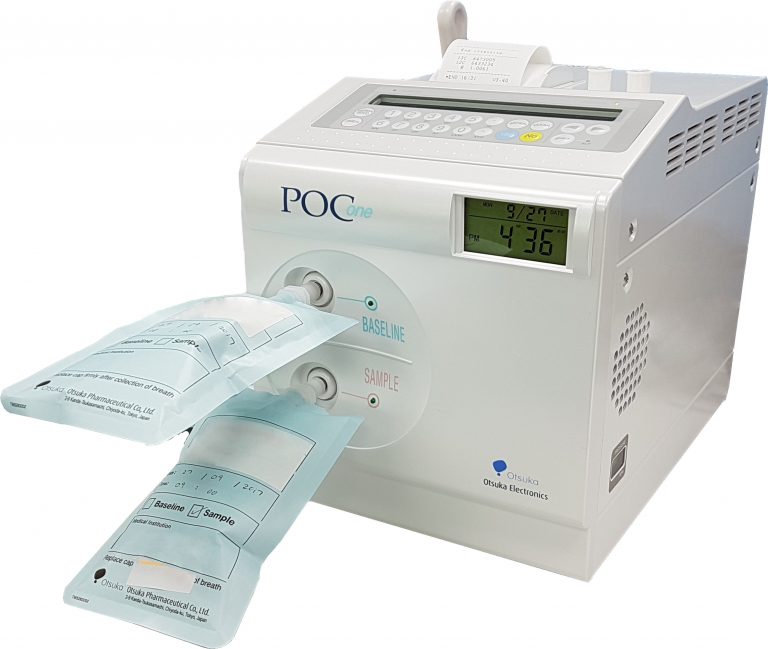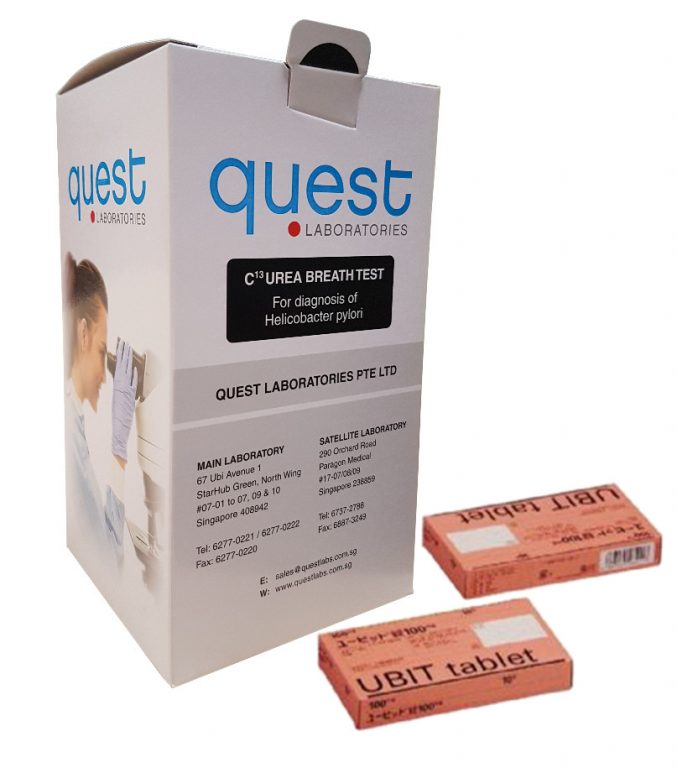
The Urea Breath Test is a simple test that is done on a patient’s breath for the purpose of detecting possible infection by Helicobacter pylori (H. pylori). H. pylori is strongly associated with peptic ulcer disease and chronic active gastritis. Additionally, H. pylori infection is an independent risk factor for gastric cancer and primary malignant lymphoma of the stomach.
Widely regarded as the gold standard for in vivo diagnosis of H. pylori infection, the Urea Breath Test works on the basis of indirectly detecting the presence of H. pylori-associated urease by measuring the amount of CO2 in a patient’s breath.
The first of two breath samples is used as the baseline breath sample and it is collected before the patient ingests a 13C-urea tablet, containing a naturally occurring, non-radioactive carbon isotope. A second sample is collected about 20 minutes after the tablet ingestion. If H. pylori-associated urease is present, it causes the urea introduced by the tablet to degrade, producing ammonia and CO2. The resultant CO2 is absorbed in the blood and then exhaled. A rise in the ratio of 13CO2 to 12CO2 between the pre- and post-ingestion breath samples indicates the existence of H. pylori-associated urease.

In preparing to take the Urea Breath Test, patients should:
- Fast for at least 3-6 hours prior to the test.
- Stop smoking for at least 30 minutes before the test.
- Stop taking antibiotics for at least 4 weeks prior to the test, especially Amoxicillin (Amoxil, Moxam), Bismuth tricitrate (Denol), Clarithromycin (Klacid), Fasigyn (Trinidazole), Metronidazole (Flagyl), and Tetracycline (Tetrex, Mysteclin, Achromycin).
- Stop taking proton pump inhibitors in the form of Losec (Omeprazole), Somac (Pantoprazole Sodium Sesquihydrate), Zoton (Lansoprazole), and Nexiam for at least 1 week before the test.
